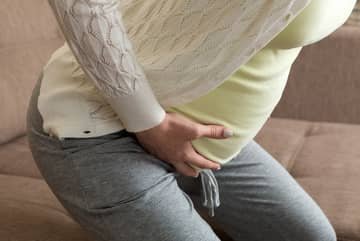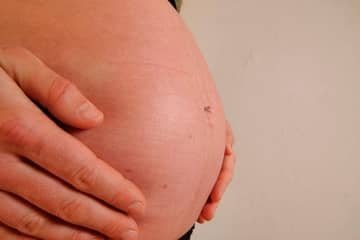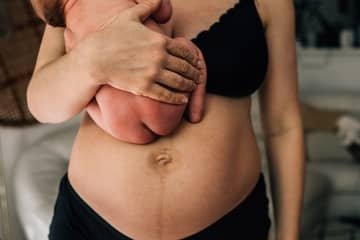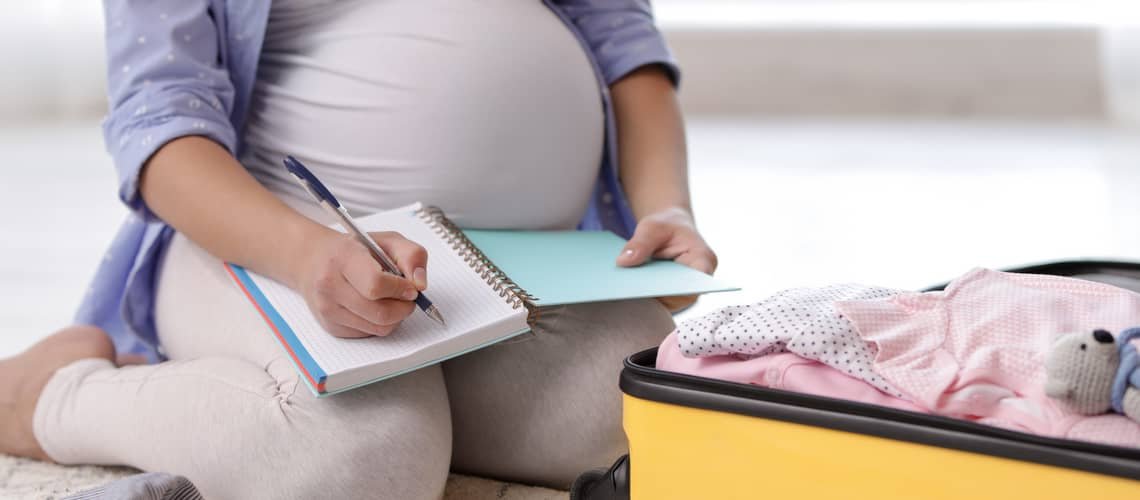
What to pack for the labour ward? A detailed list and equipment for the maternity ward for the mother
The approaching birth comes with many hectic and anxiety-provoking situations that apply to prenatal preparation. Packing a maternity bag is an integral part of these stressful and uncertain times. If you consider packing before a vacation to be a difficult task, imagine how expectant mothers must feel before giving birth. And that's especially considering the fact that each maternity hospital can set its own list of required things to pack for the maternity hospital.
If you are interested in what you need to pack as part of your maternity and newborn kit and whether there are specific requirements depending on individual hospitals and clinics, read our article in which we have summarized everything that expectant mothers should know about this topic.
The most important documents needed for the maternity ward
Since every patient must be automatically registered in hospitals, it is necessary that you prepare all the relevant documents in the last days before the birth in a place where you can easily grab them and take them with you when your labor starts.
Sufficient advance preparation of these papers is a very important aspect in case you have a premature birth or other complications that could in some way affect the quick collection of the necessary documents.
The basic essentials certainly include your identity card, health card and pregnancy card, which contains all the essential information regarding the entire period of your pregnancy. If you underwent examinations by specialists during your pregnancy, you should definitely not forget to pack the papers with the relevant results.
In terms of documentation, which is carried out approximately a day after the birth of the baby, it is necessary that you have several important documents with you, depending on your current status. While in the case of a marriage it is necessary to present a marriage certificate, women after a divorce must document this fact with a court judgment, on which a stamp and the date of entry into force must be visible.
However, if you are not married, but you have a partner who acknowledges the paternity of the newborn, it is necessary that you bring to the hospital a record prepared by the registry office, taking into account the determination of paternity and consent to this matter. It is also advisable if you already have a pre-planned pediatrician whom you will go to after the birth of the baby. The hospital staff will ask you for the name and address of the pediatrician's office.
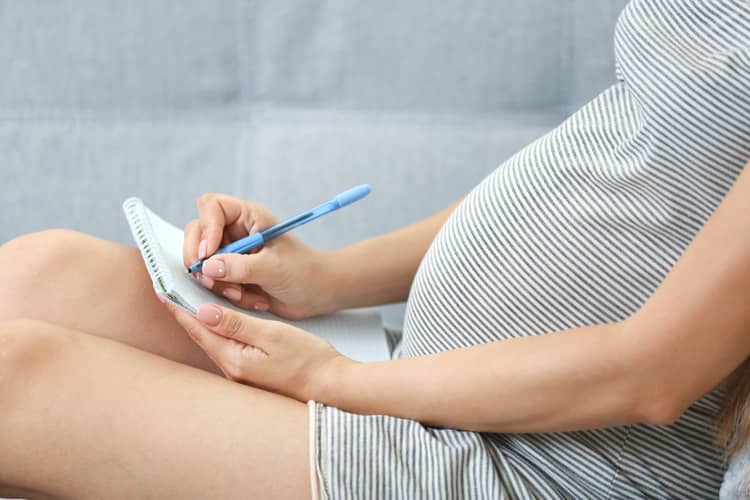
Equipment for the maternity ward for the mother
As we mentioned above, what you will need for the maternity ward depends on the hospital you choose. The institutions have a detailed list mostly listed on the respective websites, while some clinics also offer a service in the form of a short briefing or a tour of the delivery room and the room where your birth and postpartum care will take place.
While in the case of selected hospitals you do not have to wear nightgowns, pads or a bathrobe to the delivery room, others do not provide the service of renting the named items or other basic necessities for the baby and the mother. So everything depends on the specific hospital, or maternity hospital, which you decide on before the baby's official arrival.
Clothing for moms in the maternity ward
As part of the list of things to take to the maternity ward, items belonging to the category of necessary clothing, shoes to change into, and underwear for mothers must not be missing. In connection with these needs, it is necessary to think about the fact that after giving birth, there is more sweating or soiling, while your fed newborn can also choke you. Therefore, it is better to pack more pieces from individual parts of clothing.
In general, in the hospital you will need nightgowns or a bathrobe, which is suitable for moving around the corridors of the building, during visits, but especially in the cold months, when sleeping in a nightgown is definitely not the most pleasant. As for nightgowns, you should specifically choose those with a front opening to make breastfeeding easier.
You should definitely not forget about socks, which are suitable for moving through the cold hospital corridors, but also during the birth itself. In the birthing rooms, the feet of some mothers tend to get cold. This problem can therefore be eliminated by simply packing at least three pairs of socks in your bag for the delivery room, while this article of clothing should be remembered especially at the moment when you move to the delivery room.
The specificity of the list for a woman at the birth of a child is mainly reflected in the aspect of underwear. Panties and bras should be adapted to the postpartum needs of the woman. Panties should be looser and more flexible, so that you feel comfortable in them, but also so that large gynecological pads can fit in them. Doctors usually recommend that you lie in a hospital bed without underwear, but it is more convenient to have them on hand for moving around the corridor.
The use of bras in the maternity hospital is very individual, but breasts full of breast milk can weigh you down without support, while it often happens that milk still flows after breastfeeding, which leads to soiling of the nightgown. It is therefore better to have a bra lined with breast pads. From the point of view of practicality, it is most appropriate to choose bras for breastfeeding.
Footwear for the maternity ward mainly consists of slippers, which you will use when moving to the toilet, but also during your stay in your hospital room. Choose comfortable, non-slip and size-appropriate slippers to change into, to avoid unwanted slips or trips. As for the shower, some moms recommend rubber flip-flops, which you don't have to take off while washing, and thus you avoid getting some kind of fungal foot disease.
However, you should also think about your journey home. Sometimes the clothes you were wearing when you arrived are enough to leave the maternity hospital, but it often happens that women in labor come in clothes in which their amniotic fluid has drained, and thus they are no longer usable for the journey from the hospital.
So either pack some comfortable clothes in your bag to the maternity ward, in which you will leave, or instruct your partner or another close person to deliver such an outfit directly to the hospital.
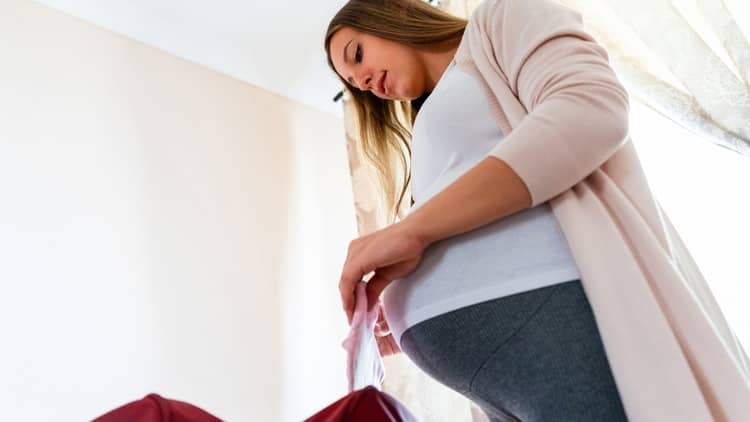
Hygienic needs for mom
Your cosmetic bag should definitely not lack basic toiletries, such as toothpaste and brush, soap or shower gel, hair shampoo, body lotion, face cream, which can dry out very quickly due to hormones during childbirth, but also tissues, toilet paper and towels. It is better to bring one large towel and one face towel.
You mean that shower gel, shampoo and soap should be unscented, because too strong scents can cover your natural scent, which can confuse the baby. However, it is also better for the reason that intense perfumes may not suit a newborn's sense of smell at all.
To make you feel comfortable in the hospital bed after giving birth, it is worth investing in disposable bed pads before giving birth. They are sold in medical supplies, and it is advisable to stock up on at least eight to ten pieces.
Pads are the most necessary hygiene items. Since after birth there is a subsequent excretion of remnants of the placenta or blood as a result of cutting, or rupture of the perineum, pregnant women should wear special gynecological pads after childbirth, which, although they appear gigantic, their size is adequate in view of their function. We recommend packing at least two or three packages in your maternity bag.
If you decide to wear a bra after giving birth, it is advisable to have it padded with special bra tampons after breastfeeding. This will prevent the bra itself and the nightgown from getting dirty due to flowing breast milk after breastfeeding.
A razor or razor will definitely come in handy for shaving before giving birth. Don't forget to pack the medicines you take regularly. You can also use calcium ointment to help with cracked nipples, a nasal spray to relieve a stuffy nose during childbirth, or an ointment for hemorrhoids, which some women may suffer from after childbirth.
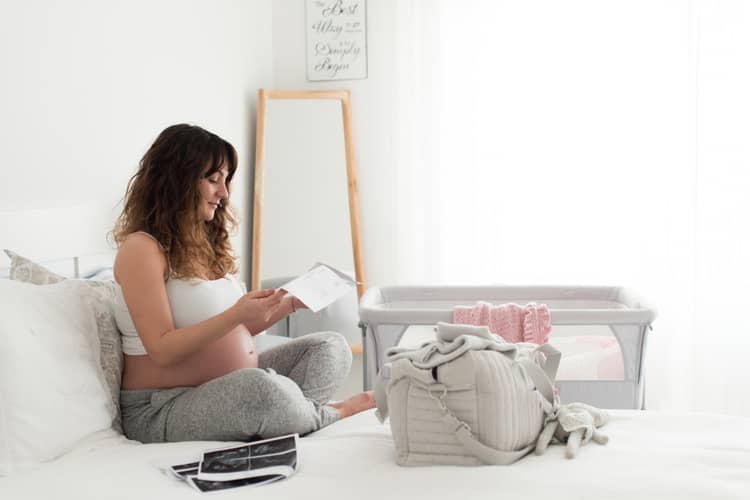
What else do I need for the maternity ward?
In addition to clothes and toiletries, don't forget to pack a charger for your smartphone or other electronics that you will take with you to the maternity hospital to shorten the long time before birth or when your unborn baby will be sleeping. If you prefer other ways of spending your free time, you can bring crosswords, magazines, or a book.
It is also worth thinking about following the drinking regimen after childbirth, and therefore having at least a bottle of water or non-carbonated mineral water on hand. Fizzy drinks could cause you to wheeze after giving birth, straining your entire body and airways. Your partner or another visitor can provide water or other food for you in the following days.
In advance, you should inquire about tableware, such as cutlery, a glass, or a cup or soup bowl. While some institutions have them and therefore supply them to all mothers, others require you to bring your own.
Basic necessities and clothing for a newborn in the maternity ward
Most hospitals provide baby rompers for newborns, so you don't have to worry about clothes for your baby. If you still want to take your own things, you should definitely think about bodysuits or the aforementioned infant chemises, booties or semi-booties. Half clogs are best for first-time mothers, as complete clogs can be a problem for them to get dressed at first.
Take at least three to five pieces of camisoles and booties to the maternity ward. Since newborn babies are very sensitive to the cold, it is worth packing a cap and cotton socks in the bag. You can also pack gloves that protect the baby from scratches.
When you leave the hospital, you will definitely need two cotton sweaters. Within each of the listed types of children's clothing, it is better to have at least one extra item in reserve in case of a "cracking accident".
Disposable diapers are the most important for a baby. Since each baby is different, it is possible that they will develop eczema or other rashes from a specific type of diaper. It is therefore recommended not to buy long-term stocks of diapers, so that you do not have to throw them away or pass them on to other people. For the maternity hospital, buy one or two packages marked 0 or 1.
Diapers marked with the number 0 are intended for premature babies weighing mostly up to three kilograms, while the marking 1 belongs to diapers for children with a birth weight between two and five kilograms.
Baby wet wipes will come in handy for changing diapers, as well as a diaper changing mat, which you can use instead of the mentioned bed mats. In addition to disposable diapers, don't forget the cloth diapers that you use both when burping and burping your baby, and during bathing. Since cloth diapers get dirty quickly due to their function, pack at least three of them.
Pacifiers in the maternity ward are a topic that divides mothers into two camps. While some are happy to give their baby a pacifier immediately after birth, others would prefer not to introduce their baby to this habit. In any case, it's every mother's business, so it's up to you whether you pack them in your bag for the maternity ward.
Since children's skin is very sensitive, it is necessary to apply gentle hygiene products to it. So take baby washing gel to the maternity ward, as well as cream to prevent the formation of boils and baby oil, which will protect your baby's skin from drying out. It is also worth having cotton buds on hand for your baby's ears.
Many mothers will confirm that the swaddle belongs in the maternity ward. You can use it not only during visits, but also when you leave the hospital, when you put the baby in the car seat. You should ensure this in the car that will take you away before the birth.
In addition to the swaddle, you can also pack a baby blanket in your maternity bag, which will help your baby fall asleep more comfortably, move around in a stroller and car seat, up to the age of three.
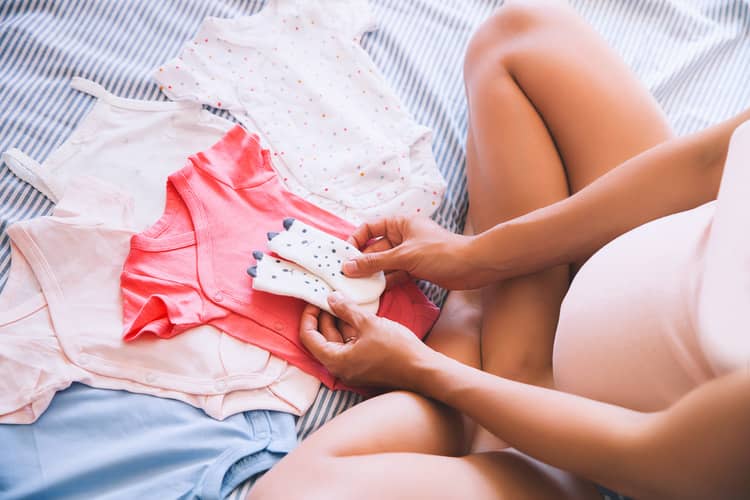
List of things for the maternity ward - experience
Discussing mothers clarified many aspects of the list of necessary things for the maternity ward. They pointed out that maternity hospitals have a detailed list listed on their respective websites, so it is necessary to follow them. They also confirmed that it depends on the hospital what they will offer mothers and their newborns to borrow during their stay at the facility.
In connection with tampons for bras, the discussants stated that their need is very individual, as the release of breast milk can be different for each mother. While for some it starts already a few hours after giving birth, for others it starts after leaving the maternity ward. One discussing mom even gave interesting advice about hair dryers. The woman will use it not only to dry her hair, but also to calm newborns when they cry "for no reason".
The most frequent questions - FAQ
In the article, we focused on the most important aspects related to the list of things needed for the maternity ward for the mother and the newborn. We have prepared several additional points of interest on this issue in the Q&A section. However, if you do not find the information you are interested in even in this part of the article, do not hesitate to ask us your questions in the comments section. We try to answer as soon as possible.
When to pack for the maternity hospital?
What will happen to my pregnancy book after the birth?
Do I need to pack my nightgowns if they rent them at the hospital where I will give birth?
Should I also bring a breast pump or a baby monitor to the maternity hospital?
Pridať komentár

